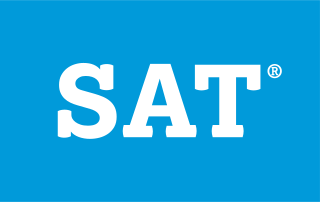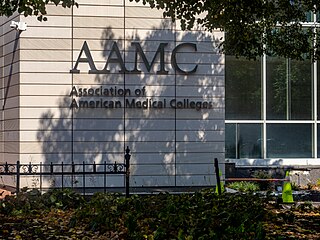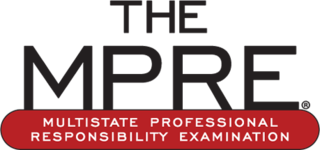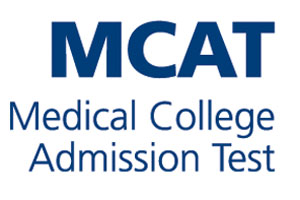
The SAT is a standardized test widely used for college admissions in the United States. Since its debut in 1926, its name and scoring have changed several times. For much of its history, it was called the Scholastic Aptitude Test and had two components, Verbal and Mathematical, each of which was scored on a range from 200 to 800. Later it was called the Scholastic Assessment Test, then the SAT I: Reasoning Test, then the SAT Reasoning Test, then simply the SAT.
An attorney at law in the United States is a practitioner in a court of law who is legally qualified to prosecute and defend actions in court on the retainer of clients. As of January 1, 2023, there were 1,331,290 active lawyers in the United States. In terms of absolute numbers, the American legal profession was the largest in the world as of 2015, and it is thought to be the largest in the world in proportion to domestic population. A 2012 survey conducted by LexisNexis Martindale-Hubbell determined 58 million consumers in the U.S. sought an attorney in the last year and that 76 percent of consumers used the Internet to search for an attorney.

Admission to the bar in the United States is the granting of permission by a particular court system to a lawyer to practice law in the jurisdiction. Each U.S. state and jurisdiction has its own court system and sets its own rules and standards for bar admission. In most cases, a person is admitted or called to the bar of the highest court in the jurisdiction and is thereby authorized to practice law in the jurisdiction. Federal courts, although often overlapping in admission standards with states, set their own requirements.

In law, the bar is the legal profession as an institution. The term is a metonym for the line that separates the parts of a courtroom reserved for spectators and those reserved for participants in a trial such as lawyers.

The College Board, styled as CollegeBoard, is an American not-for-profit organization that was formed in December 1899 as the College Entrance Examination Board (CEEB) to expand access to higher education. While the College Board is not an association of colleges, it runs a membership association of institutions, including over 6,000 schools, colleges, universities, and other educational organizations.

The Association of American Medical Colleges (AAMC) is a 501(c)(3) nonprofit organization based in Washington, D.C. that was established in 1876. It represents medical schools, teaching hospitals, and academic and scientific societies, while providing services to its member institutions that include data from medical, education, and health studies, as well as consulting. The AAMC administers the Medical College Admission Test and operates the American Medical College Application Service and the Electronic Residency Application Service. Along with the American Medical Association (AMA), the AAMC co-sponsors the Liaison Committee on Medical Education (LCME), the accrediting body for all U.S. MD-granting medical education programs.

The Multistate Professional Responsibility Examination (MPRE) is a 120-minute, 60-question, multiple-choice examination designed to measure the knowledge and understanding of established standards related to a lawyer's professional conduct. It was developed by the National Conference of Bar Examiners and was first administered in 1980.
University admission or college admission is the process through which students enter tertiary education at universities and colleges. Systems vary widely from country to country, and sometimes from institution to institution.
The Special Tertiary Admissions Test (STAT) is a group of four scholastic aptitude tests used for admission into undergraduate programs at Australian universities, for students without a recent Australian Tertiary Admission Rank (ATAR). Some universities require STAT testing for admission to particular programs or courses. The Australian Council for Educational Research designs the examinations. The central tertiary admissions centre in each Australian state and territory and the University of Tasmania administer the STAT examinations.
The National Council Licensure Examination (NCLEX) is a nationwide examination for the licensing of nurses in the United States, Canada, and Australia since 1982, 2015, and 2020, respectively. There are two types: the NCLEX-RN and the NCLEX-PN. After graduating from a school of nursing, one takes the NCLEX exam to receive a nursing license. A nursing license gives an individual the permission to practice nursing, granted by the state where they met the requirements.
The English Language Proficiency Test (ELPT) was the name of a SAT II last administered in January 2005. It was a one-hour multiple choice test given on English language proficiency by The College Board. A student whose native language was not English could have chosen to take this test instead of or in addition to Test of English as a Foreign Language (TOEFL) for college entrance depending upon requirements of the schools in which the student was planning to apply. Until 1994, the SAT II's were known as Achievement Tests. The ELPT assessed both the understanding of spoken and written standard American English and the ability to function in a classroom where English is spoken. The test was intended for students whose best language was not English; who attend U.S. high schools, or who had studied in an international school where courses were taught in English; had completed two to four years of English language instruction in an English as a Second Language program or in English enrichment courses; or students who spoke a language other than English at home or work. It was scored on a scale of 901 to 999

A high-stakes test is a test with important consequences for the test taker. Passing has important benefits, such as a high school diploma, a scholarship, or a license to practice a profession. Failing has important disadvantages, such as being forced to take remedial classes until the test can be passed, not being allowed to drive a car, or difficulty finding employment.

The Medical College Admission Test is a computer-based standardized examination for prospective medical students in the United States, Australia, Canada, and the Caribbean Islands. It is designed to assess problem solving, critical thinking, written analysis and knowledge of scientific concepts and principles. Before 2007, the exam was a paper-and-pencil test; since 2007, all administrations of the exam have been computer-based.

SAT Subject Tests were a set of multiple-choice standardized tests given by The College Board on individual topics, typically taken to improve a student's credentials for college admissions in the United States. For most of their existence, from their introduction in 1937 until 1994, the SAT Subject Tests were known as Achievement Tests, and until January 2005, they were known as SAT II: Subject Tests. They are still commonly known by these names. Unlike the Scholastic Aptitude Test (SAT) that the College Board offers, which are intended to measure general aptitude for academic studies, the Achievement Tests are intended to measure the level of knowledge and understanding in a variety of specific subjects. Like the SAT, the scores for an Achievement Test range from 200 (lowest) to 800 (highest).
Wyzant is an online services marketplace in educational technology for matching tutors with students. This organization is headquartered in Chicago, Illinois, and is a division of IXL Learning.
ACT, Inc. was an American 501(c)(3) nonprofit organization, primarily known for the ACT, a standardized test designed to assess high school students' academic achievement and college readiness. However, in April 2024, it was announced that the company had been purchased by the private equity firm Nexus Capital Management and converted into a for-profit company, raising concerns about transparency and accountability. For the U.S. high school graduating class of 2019, 52 percent of graduates had taken the ACT test; the more than 1.78 million students included virtually all high school graduates in 17 states.

In the United States, those seeking to become lawyers must normally pass a bar examination before they can be admitted to the bar and become licensed to practice law. Bar exams are administered by states or territories, usually by agencies under the authority of state supreme courts. Almost all states use some examination components created by the National Conference of Bar Examiners (NCBE). Forty-one jurisdictions have adopted the Uniform Bar Examination (UBE), which is composed entirely of NCBE-created components.
The SAT is a standardized test commonly used for the purpose of admission to colleges and universities in the United States. The test, owned by the College Board and originally developed by Carl Brigham, was first administered on June 23, 1926, to about 8,000 students. The test was introduced as a supplement to the College Board essay exams already in use for college admissions, but ease of administration of the SAT and other factors led to the discontinuation of the essay exams during World War II. The SAT has since gone through numerous changes in content, duration, scoring, and name; the test was taken by more than 1.9 million students in the graduating high school class of 2023.








